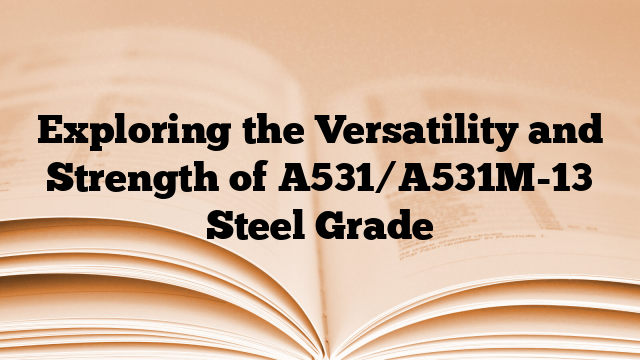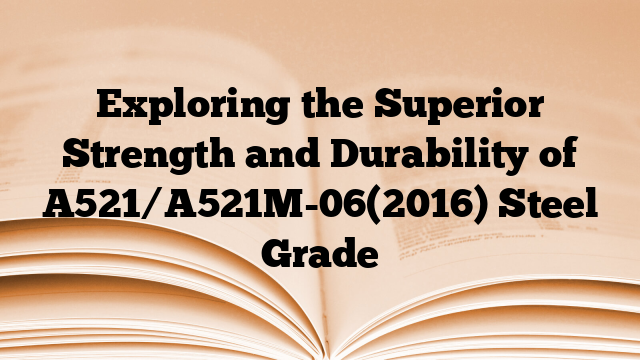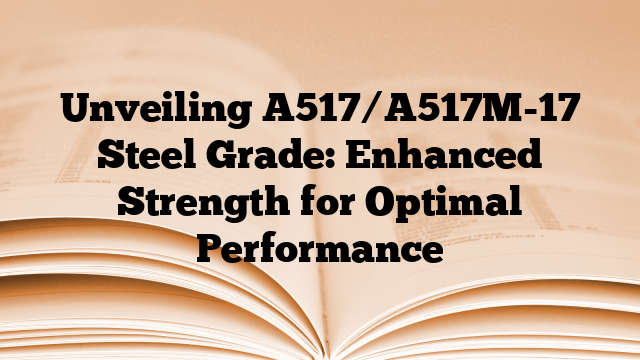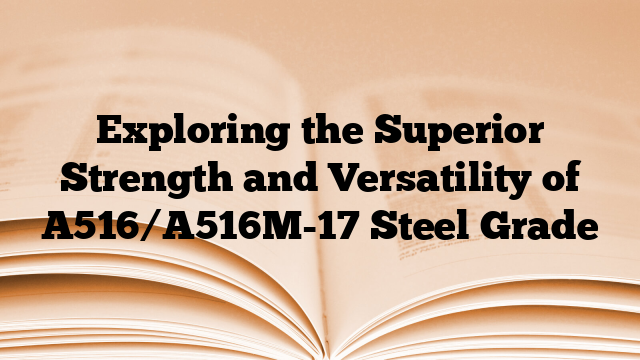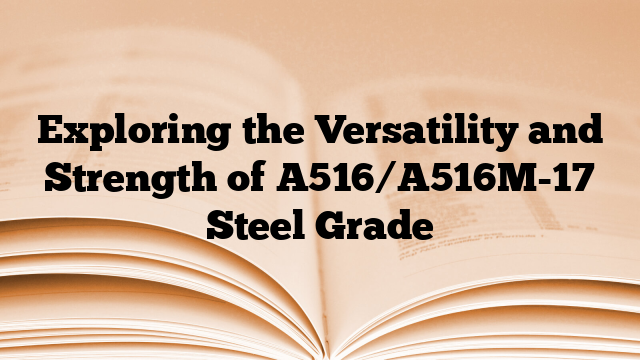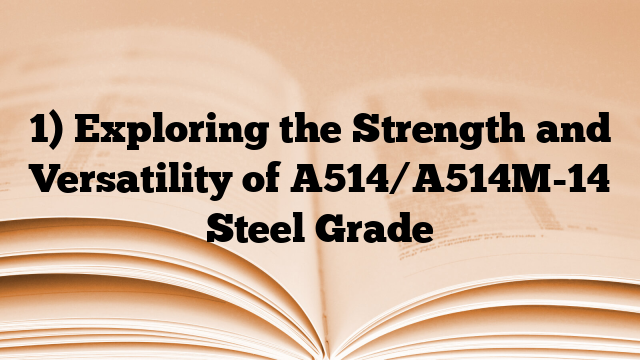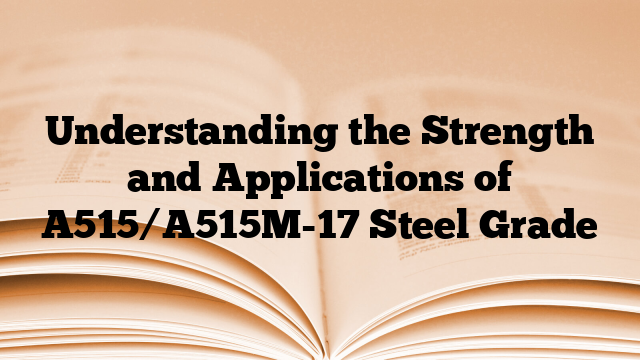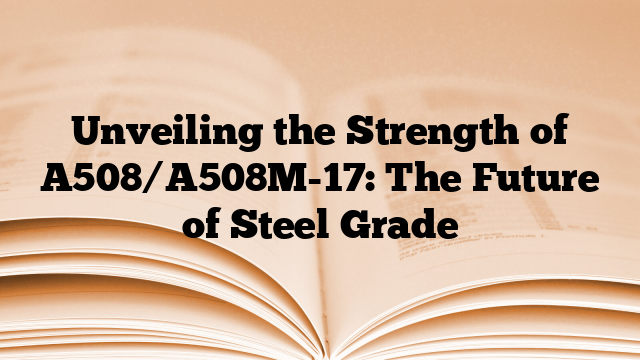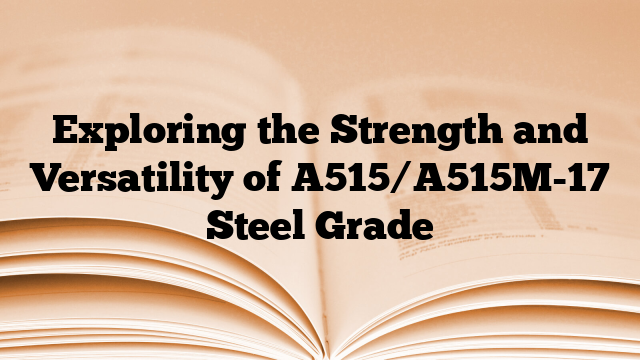The chemical composition of A531/A531M-13 steel grade is as follows: – Carbon (C): 0.10-0.20% – Manganese (Mn): 1.00-1.60% – Phosphorus (P): 0.030% maximum – Sulfur (S): 0.030% maximum – Silicon (Si): 0.15-0.35% – Copper (Cu): 0.35% maximum – Nickel (Ni): 0.25% maximum – Chromium (Cr): 0.40-0.65% – Vanadium (V): 0.01-0.10% These elements combine to provide […]
Tag Archives: Strength
The A529/A529M-14 steel grade is a type of high-strength structural steel that offers versatility and strength in various applications. It is commonly used in the construction industry for building structures such as bridges, buildings, and other heavy-duty applications. The chemical composition of A529/A529M-14 steel grade includes elements such as carbon (C), manganese (Mn), phosphorus (P), […]
Chemical Composition: The chemical composition of A521/A521M-06(2016) steel grade typically consists of the following elements: – Carbon (C): 0.20% maximum – Manganese (Mn): 1.35-1.65% – Phosphorus (P): 0.04% maximum – Sulfur (S): 0.05% maximum – Silicon (Si): 0.15-0.35% – Copper (Cu): 0.35% maximum – Nickel (Ni): 0.25% maximum – Chromium (Cr): 0.15% maximum – Molybdenum […]
A517/A517M-17 is a steel grade that has been specifically designed to provide enhanced strength for optimal performance in various applications. The chemical composition of A517/A517M-17 steel includes elements such as carbon, manganese, phosphorus, sulfur, silicon, nickel, chromium, molybdenum, boron, vanadium, titanium, and copper, among others. The mechanical properties of A517/A517M-17 steel grade are determined by […]
To understand the superior strength and versatility of the A516/A516M-17 steel grade, it is important to examine its chemical composition, mechanical properties, and corresponding standard number. The chemical composition of A516/A516M-17 steel grade typically consists of carbon (0.27%), manganese (0.85-1.20%), phosphorus (0.025%), sulfur (0.025%), silicon (0.15-0.40%), and traces of alloying elements such as copper, nickel, […]
The A516/A516M-17 steel grade is a low carbon steel alloy that is primarily used in the production of pressure vessels and boilers. It is known for its high strength and versatility, making it a popular choice in various industries. The chemical composition of A516/A516M-17 steel grade consists of carbon (C), manganese (Mn), phosphorus (P), sulfur […]
The chemical composition of A514/A514M-14 steel grade is as follows: – Carbon (C): 0.14-0.21% – Manganese (Mn): 0.80-1.10% – Phosphorus (P): 0.035% (maximum) – Sulfur (S): 0.035% (maximum) – Silicon (Si): 0.15-0.35% – Nickel (Ni): 0.70-1.00% – Chromium (Cr): 0.40-0.65% – Molybdenum (Mo): 0.15-0.25% – Vanadium (V): 0.03-0.08% – Boron (B): 0.0005-0.005% The mechanical properties […]
ASTM A515/A515M-17 is a standard specification for pressure vessel plates, carbon steel, for intermediate- and higher-temperature service. This specification specifies three grades of carbon steel plates, designated as Grade 60, Grade 65, and Grade 70. These plates are primarily used for the fabrication of boilers in industries such as oil and gas, refinery, petrochemical, and […]
The corresponding standard number for “Unveiling the Strength of A508/A508M-17: The Future of Steel Grade” would likely be ASTM A508/A508M-17. This standard pertains to the specification for quenched and tempered vacuum-treated carbon and alloy steel forgings for pressure vessels.
The A515/A515M-17 steel grade is a high-strength, low-alloy steel that is commonly used in pressure vessels and boiler applications. It is composed primarily of iron, with small amounts of carbon, manganese, phosphorus, sulfur, silicon, and copper. The mechanical properties of this steel grade are impressive, with a minimum yield strength of 415 MPa (60 ksi) […]

